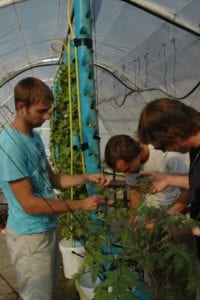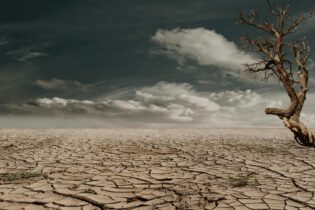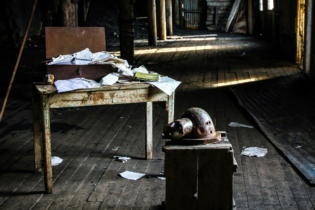The basics behind the success of the popular hanging gardens at the Moyo restaurants in Cape Town are being studied by agronomy students at Stellenbosch University (SU) who are not only learning how to grow their own vertical aquaponics systems, but are also helping to set guidelines on how others can do so too.
Two vertical aquaponics garden systems were installed in August 2012 at the Moyo restaurants in the V&A Waterfront and Kirstenbosch National Botanical Gardens, and are since providing salad greens, strawberries and tilapia fish for restaurant dishes. Aquaponics is a remarkable way of growing fish and food together through the integration of hydroponics with aquaculture. According to Moyo brand manager, Dries van der Merwe, the gardens form part of Moyo’s drive to find sustainable solutions to the provision of food, and ultimately to food security. “Such a system is the future of urban farming,” he believes. The space-saving system is the brainchild of Wellington entrepreneur and SU researcher Jaco Visser, who devised and implemented it at the various restaurants. Estelle Kempen, in charge of greenhouse cultivation in the Department of Agronomy at Stellenbosch University, has consulted on the project since its inception. At the Waterfront, the garden is housed at the Moyo African street food market in vertically hanging PVC pipes. Salad plants grow from various niches made within each of these pipes, and are regularly harvested to meet the needs of the restaurant kitchen. Typical of an aquaponics system, plants receive water and nutrition from water that circulated from four pools in which Tilapia fish is bred. Focusing on the future “The study thus far has focussed on the optimal functioning of the system as a whole. We looked at the design of the system, the different plants that can be used and the optimal plant nutrition within the system. The system as a whole, however, is an answer to sustainable food production as it can be implemented in (urban) areas where food would not conventionally be produced and it can use waste material (water from the fish) to grow the crops,” explains Kempen. She adds that by producing more food close to where it is consumed also reduces the environmental footprint with regards to transport, packaging, food waste and so forth. “Also as good agricultural land is becoming scarce but at the same time we need to produce more food for a growing world population alternative methods of food production like this will become more and more important.” Additionally, the idea of sustainable production and utiilisation and better use of natural resources is irrevocably linked to the practices of reuse and recycling. In this case, the water is continuously reused – closed system – which reduces the amount of water needed to produce the crops, compared to conventional production. “Also instead of applying large amounts of fertilizers as per conventional production, the efficiency of fertilizer use is increased since it is reused instead of leached out to the environment. Ultimately, the idea is that the fish will produce all the nutrients the plants need and no additional fertilizers need to be used,” explains Kempen.The ultimate benefit is therefore in terms of reduced water and fertilizer use to produce food, and less environmental pollution as now waste products are released to the environment. “Recycling of the system itself at stage is not a priority since once it is constructed it will be used for a long time – the pipes do not have to be replaced regularly,” adds Kempen.
Directed at demand At Moyo, the produce has been chosen according to the need at the restaurant. If the produce is not used in the restaurant it will be possible to sell to the public as well. “The same system can be adjusted to produce whatever is needed in a specific scenario – if a supermarket wants to use this system to produce only parsley for instance, that will be possible,” adds Kempen. The system has also become quite a tourist attraction too. “After Table Mountain, it’s probably the most photographed tourist attraction in the Cape,” jokes Visser, an alumnus of Stellenbosch University with a diploma in aquaculture. “The idea is ultimately to help people establish similar gardens within urban areas,” Van der Merwe explains. “Do-it-yourself” kits will be sold as part of the Moyo Urban Farms initiative.” Before this can happen, however, guidelines on how to install and maintain such a system need to be compiled. This is where researcher Kempen and her Stellenbosch University agronomy students fit into the picture. According to Kempen, the ideal is that the aquaponics system can run on its own, with plants receiving enough nutrients from the water that circulates from the tilapia ponds. Since there is no soil involved, all the nutrients must be available in the water that is recirculating through the system. “At the moment, additional nutrients still have to be added to the water to ensure optimal harvests for Moyo,” she says. “It’s still unclear how many fish must be kept per pool to ensure that the plants receive enough nutrients from the water, for instance,” Kempen explains one of the conundrums that will now be investigated further. “If we can work this out, there will be no need to add extra nutrients and the system can become more self-sustaining,” says Kempen. Studies will also be conducted to find out what the optimal numbers of niches per pipe are, in which plants can grow successfully.







